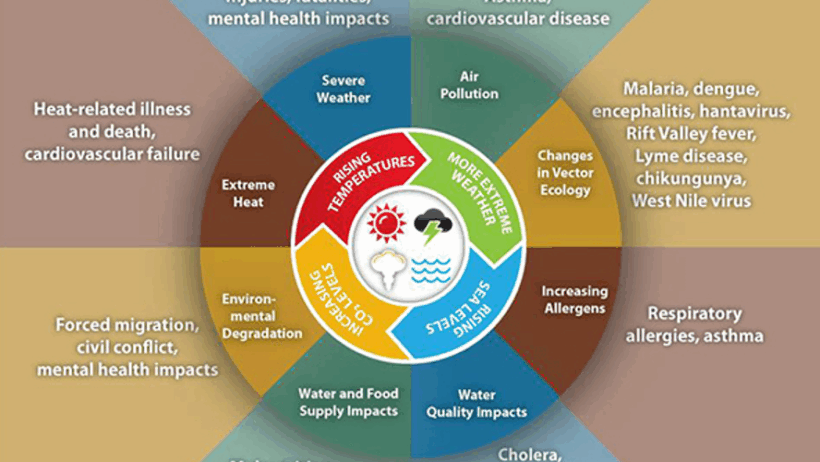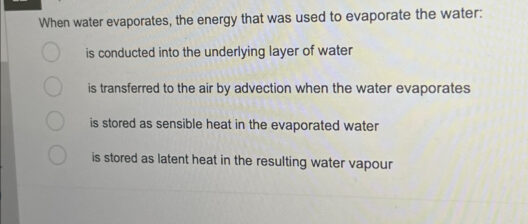In the intricate tapestry of life, human existence is interwoven with the delicate threads of our environment. Yet, as the vibrant hues of nature begin to fade, a darker narrative unfolds: global warming is not merely an abstract concept but a palpable threat that directly jeopardizes our health. The proverbial canary in the coal mine, climate change serves as an ominous harbinger, foretelling the ramifications of our actions. Indeed, as the climate warms, the repercussions echo through the corridors of our health systems, communities, and indeed our very bodies.
With each passing year, the stark reality of rising temperatures emerges before us like a slowly unfurling nightmare. The World Health Organization has emphasized that these climatic shifts amplify the prevalence of numerous health detriments. Heatwaves, for instance, are no longer a seasonal quirk; they have become brutal harbingers of heat-related illnesses and fatalities. The vulnerable—those with pre-existing health conditions, the elderly, and young children—are particularly susceptible. As the thermometer’s mercury rises, so does the risk of heat exhaustion and heatstroke. The human body, a marvel of biological engineering, shows troubling signs of fragility under the relentless assault of extreme heat.
Moreover, the connection between climate change and respiratory ailments is insidious. As temperatures climb, so too do the levels of pollutants and allergens in our atmosphere. Ozone levels swell with the rising heat, and wildfires—exacerbated by dry conditions—release a noxious cocktail of particulate matter into the air. Respiratory diseases, including asthma and chronic obstructive pulmonary disease, burgeon in this toxic milieu. The intricate dance between rising temperatures and declining air quality serves as a reminder that every breath we take is a fraught gamble.
In addition to respiratory challenges, vector-borne diseases are experiencing a renaissance fueled by warmer climates. Mosquitoes, those insidious carriers of diseases such as malaria and dengue fever, thrive and expand their territories as the planet warms. The synergistic effects of prolonged heat and increased rainfall create optimal breeding conditions for these pests. These diseases are not merely geographic rotundas encased in tropical enclaves; they are invading previously healthy environments across the globe. As the balance of nature tips, millions of individuals face new and dangerous health threats.
Nutrition, the cornerstone of health, is not immune to the ravages of climate change. Agricultural output—the very lifeblood of food security—is threatened by erratic weather patterns, prolonged droughts, and inundating floods. Crop yields fluctuate dangerously, leading to food scarcity and exorbitant prices. Malnutrition becomes an imminent danger, particularly for the marginalized who lack access to nutritious alternatives. As the planet’s temperature rises, food systems teeter precariously on the brink of collapse, inherently intertwining climate and health.
Furthermore, emerging research highlights the psychological ramifications of climate change. Mental health is deeply rooted in our connection to the environment, and when that bond is threatened, we are left vulnerable. The looming fear of environmental degradation, alongside the traumatic impacts of natural disasters, cultivates anxiety, depression, and post-traumatic stress disorder. The specter of climate change casts a long shadow over our psychological well-being. We are left grappling with feelings of helplessness, often exacerbated by the escalating frequency of extreme weather events.
The health implications of global warming extend far beyond the tangible realm of physical ailments. Consequently, the nexus between climate change and social determinants of health must be examined. Marginalized communities—those lacking adequate infrastructure and healthcare access—bear the brunt of climate change’s toll. Economic disparities are accentuated, leading to greater health inequities. The fragility of social fabrics is tested as vulnerable populations scramble to adapt to the changing climate; they are compelled to endure numerous health-related challenges.
To exacerbate these trials, infectious diseases are proliferating as a result of worsening climate conditions. The global spread of illnesses like Zika and Lyme disease reflects the changing habitats and behaviors of their vectors. Wetlands, once thought to be mere ecosystems, have metamorphosed into breeding grounds for disease and health risks. The intricate relationship between climate and pathogen dynamics is a potent reminder: as ecosystems shift, human health hangs perilously in the balance.
Fortunately, hope emerges from the desolation. Advocacy and action provide pathways to mitigate these health impacts. Transitioning to sustainable practices, harnessing renewable energy sources, and adopting climate-resilient agriculture alongside community engagement are essential to restoring the delicate equilibrium between human health and environmental stability. The onus rests on individuals, governments, and organizations to innovate and strive for a healthier planet. The choices we make today are the harbingers of future health outcomes and climate scenarios.
In the grand symphony of life, global warming stands as a dissonant chord that threatens to unravel the harmony we have painstakingly cultivated. Each one of us plays an essential role in rewriting this narrative. Understanding the multifaceted relationship between climate change and health is imperative. It encourages us to act—not as passive observers but as proactive participants in the quest for a sustainable future. As we navigate these turbulent waters, let us remember: our health is intricately intertwined with the health of our planet. In safeguarding the Earth, we inherently safeguard ourselves, forging a path toward a resilient and flourishing inheritance for generations to come.








